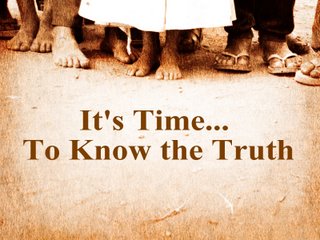Gracias Brother Manohar ~ With all due respect it is ultimately not all about any Earthly material source, such as oil, in relation as to the whole Amerikan war on terrorism. It ALL goes far far deeper and wider.
The whole situation is increasingly complex but it involves the actual inner character of man in general: his greed, his lust, his perversion of power and other related character defects. Unless we deal with these inner character defects we will merely replace one set of slaveowners for another over and over until we all make fundamental internal changes in our inner character.
What happened to the Soviet Union, Red China and the dreams of Gandhi?
More people have been killed in the name of religion than just about any other reason. Why?
In practical terms, in relation to oil, remember that Afghanistan is the key route for the ancient Silk Road
used by Genghis Khan, Alexander the Great and other foreign conquerors.
Glance @
Buddhism and Its Spread Along the Silk Road
"There one sees a structure of an elevation prodigious in height; it is supported by gigantic pillars and covered with paintings of all the birds created by God. In the interior are two immense idols carved in the rock and rising from the foot of the mountains to the summit....One cannot see anything comparable to these statues in the whole world."
---Yakut describing Bamiyan in his geographical dictionary in 1218
As I wrote yesterday, we need to integrate our theories with our practices, our ideas with our actions and keep a real balance in our lives when we are online, offline and keep inline with our own inner character and spiritual growth.
There are some good books that have been written about the whole situation in Afghanistan
Click=
Check out about Ghost Wars ~
Thursday, June 10th, 2004
Ghost Wars: How Reagan Armed the Mujahadeen in Afghanistan
"During Reagan's 8 years in power, the CIA secretly sent billions of dollars of military aid to the mujahedeen in Afghanistan in a US-supported jihad against the Soviet Union. We take a look at America's role in Afghanistan that led to the rise of Osama bin Laden's al Qaeda with Pulitzer prize-winning journalist Steve Coll, author of Ghost Wars: The Secret History of the CIA, Afghanistan, and Bin Laden, from the Soviet Invasion to September 10, 2001."
Plus, we need to consider how many of our people are functional illiterates? What are we doing to combat our own ignorance and its oprhan stepchild stupidity?
All vital social issues in class society are intrinsically interconnected in the context of connected reality.
There are no stupid questions, just stupid answers.
In connected reality, much needs to be done and we are blessed to have Internet Access, but a lot of the work in my humble opinion needs to be done on ourselves, focusing on our own priorities, establishing our own agendas and ~as is often the case here inside the United States~ not just reacting to the acting out of our enemies: the Amerikan Empire and its political-military-propaganda machine.
Are our neighbors hungry next door? Are the homeless walking by outside like domestic refugees outside our windows? Are we balanced, centered and integrated?
<><><><><><><><><><><>
Liberation Now!!!
Peter S. Lopez ~aka Peta
Humane Liberation Party
<><><><><><><><><><><><><><><><><><><><><><><>
Manohar Roy <centrum_journal@yahoo.com> wrote:
._,___Did you know that:
a.. USA supported Bin Laden and the Taliban for
years, and viewed them as freedom fighters against the Russians?
b.. As late as 1998, the US was paying the salary of
every single Taliban official in Afghanistan ?
c.. There is more oil and gas in the Caspian Sea ,
but you need a pipeline through Afghanistan to get that out?
d.. UNOCAL, a giant oil conglomerate, wanted to
build a 1000 mile pipeline from the Caspian Sea through Afghanistan to the Arabian Sea?
e.. UNOCAL spend $ 10,000,000,000 on geological
&nb sp; studies for the pipeline construction, and courted the Taliban for their support in allowing the construction to begin?
f.. All leading Taliban officials were in Texas
negotiating with UNOCAL in 1998?
g. In 1999, Taliban changed its mind and threw
UNOCAL out of the country and awarded the pipeline project to a company in Argentina?
h.. John Maresca, VP of UNOCAL testified before
Congress and said no pipeline should be set until the Taliban was gone and a more friendlygovernment was established?
i.. After 1999, the Taliban became the most evil
people in the world
j. In 2001, Bush declares war against Afghanistan , though not a single Afghani was involved in the plane hijacking?
k.. Bush blamed Bin Lade n, but did not offer any
proof, saying it was confidential?
l.. Talibans offered to hand over Bin Laden if there
was proof, but Bush bombed Afghanistan instead?
m.. We now have a new government in Afghanistan ,
which is friendlier?
n.. That the leader of the new government is one
gentleman called Hamid Karzai, who formerly worked for UNOCAL?
o.. Bush appoints a special envoy (Lakhdar Ibrahimi)
to represent the US to deal with the new government. This special envoy was formerly chief consultant to UNOCAL?p.. The US government quietly announces in January
2002 that it will support the Trans-Afghan pipeline construction?
q.. President Musharraf and Hamid Karzai announce
agreement in February 2002 to build proposed gas pipeline from Central Asia to Pakistan through Afghanistan?
.And you thought we were fighting terrorism
here, didn't you?
It is all about OIL......... ....... _,_.___
Change settings via the Web (Yahoo! ID required)
Change settings via email: Switch delivery to Daily Digest | Switch format to Traditional
Visit Your Group | Yahoo! Groups Terms of Use |.



